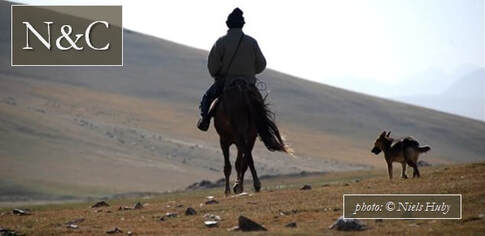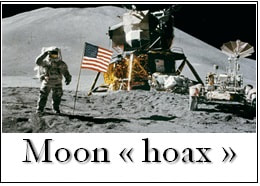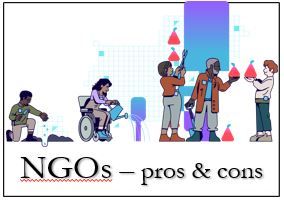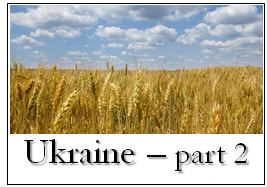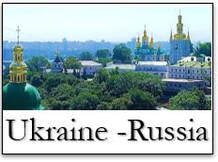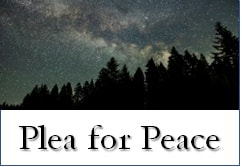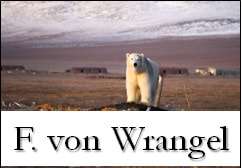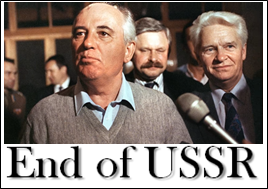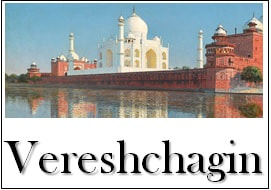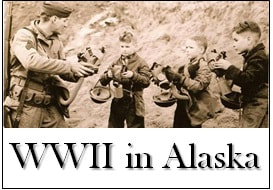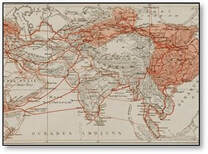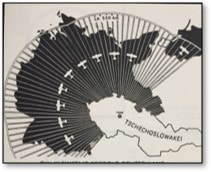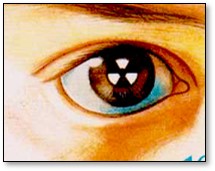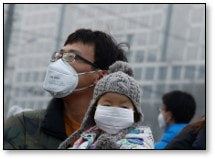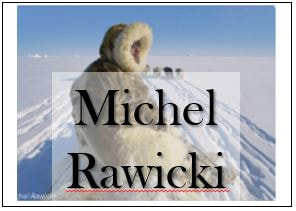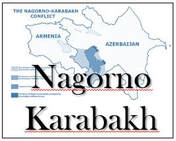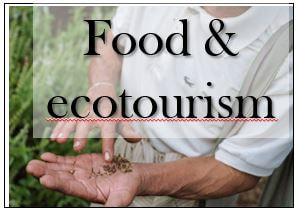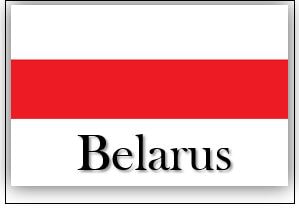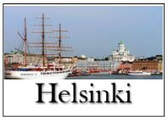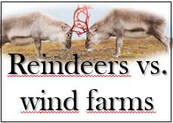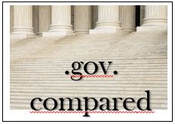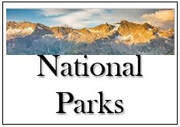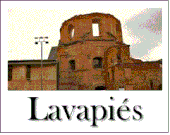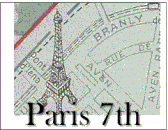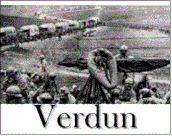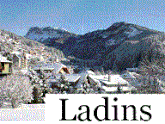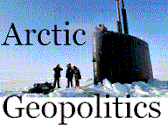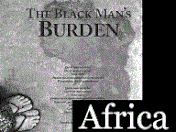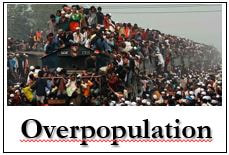|
Texts, photographs, links and any other content appearing on Nature & Cultures should not be construed as endorsement by The American University of Paris of organizations, entities, views or any other feature. Individuals are solely responsible for the content they view or post.
|
N&C No. 8 - Spring 2024
|
umankind's return to the Moon is imminent. In this Spring 2024 issue, N&C offers a duet of articles addressing doubts about the history of outer space exploration. Both articles result from the workshop sessions during The American University of Paris "Geopolitics of Outer Space" course.
"The Space Industry: Was It Worth All the Sacrifices?" - an essay on Cosmopolitics debates whether the amazing amount of money and the lives spent on astronautics were worth the benefits. Also, isn't Outer Space research just another waste of resources on pharaonic projects to benefit the military-industrial complex? In "Moon Landings: real or hoax?" talented and funny freshman (now sophomore) Eli Michaud responds to conspiracy theories allegating that the Apollo missions of 1969-1972 were staged. |
NGOs... Who Needs them?" by Laura Root, MA in International Relations & Political Science, The American Graduate School of International Relations/ The American University of Paris, retired US Navy Lieutenant and intelligence officer, presently a Ph.D. candidate at the University of South Florida, discusses several problems posed by the multiplication of NGOs and their rise to power. Are democratic sovereign states and governments dodging their responsibilities in protecting our basic civil rights, our right to health, education, a safe environment by leaving NGOs to pick up their mess? And what happens to democracy when NGOs, these private organizations, compete for power with soverign states and push for agendas that may be radically opposed to the humanistic and environmentalist agendas they stand for?
in "Understanding Ukraine and its relation to Russia - part 2" Oleg Kobtzeff continues to explore the resemblances and the growing differences between Ukrainians and Russians |
|
Also in this No. 8, check out our review of Centennial,
the iconic novel of the American West 50 years ago, as America was preparing for its bicentennial celebrations, James Michener, a celebrated author of historic novels, published a monumental work of fiction that many consider his best. It is the first historic novel to also be a geographic novel |
N&C No. 7 special issue - Ukraine & Russia
|
by Oleg Kobtzeff, our founding publisher, is the heavily revised version of the article meant to be released a year ago (with several other documents) to better understand Ukraine and its relation to Russia. The relation has now turned to war and much of the text and photos intended to be shared with N&C readers have become pre-war nostalgia pieces. The author shares how the war has personally affected his worldview and his entire identity.
Then, as we were trying to relaunch N&C after the long hiatus, four major scholars, some who are highly distinguished public figures, surprised us by offering us the honor of publishing their texts. In order of reception of these texts, here they are:
|
|
Vladimir Zelinsky, author of thoughts On the Occasion of the Death of Gorbachiov
(not to be confused with the president of Ukraine), is a well known philosopher, journalist, blogger and now, Orthodox priest, a historic figure of the dissident movement of the 1970s and 1980s in the Soviet Union. Analyzing the legacy of the recently deceased Mikhail Gorbachiov, Vladimir Zeinsky shares with us wider and deeper thoughts about about change and continuity in the history of violence in the USSR and Russia and the moral decay of Soviet then Russian society that lead to the current war. |
|
Katja Baniik's "“The starry heavens above me…”A plea for Awareness and Peace"
is a text constituted of philosophical/geopolitical notes on how the war in Ukraine has affected us all, but particularly Germany. A doctor in political geography, the author is a scholar focusing on the geopolitics of borders and a faithful reader of and contributor to Nature & Cultures (her article on Borders and identities appeared in the Winter-Spring issue of 2021). (Her text is being republished with the kind permission of moderndiplomacy) |
|
Catherine Lanfranchi-de Wrangel, author of a rich article on Ferdinand von Wrangel Associate Professor of the University of Nantes, is a leading figure of higher education in Britanny. Her teaching, research and leadership positions are countless. She has also organized numerous international conferences. An expert in Russian and in Italian languages and cultures, she also has expertise in the culture and history of the Russian Empire and particularly of the Baltic states. She has been researching the life of Ferdinand von Wrangel with her husband Dr. Alexis de Wrangel, descendant of the famous 19th Century explorer from Estland, now Estonia. She shares with us impressions from their ongoing discoveries.
Claude Fischer writing this month on Nuclear Power among her numerous publications, letters and activities, is a historic figure of behind-the-doors French and European Politics. A former school teacher and a graduate of the Sorbonne Doctoral School of Political Science, she headed the French Communist Party for the region of Lorraine, and later, the highly influential European think tank and lobby for peace and international cooperation. She and her husband Philippe Herzog, long-time Member of the French Parliament and of Member of the European Parliament, a former leader of the French Communist Party (he was the head economist of Party before distancing himself from that institution), have created over the years an impressive number forums advancing a variety of humanitarian values and ideas. Among these initiatives, Claude Fischer leads debates and actions for the Energy Union and seminars for the societal appropriation of nuclear power in Europe.
|
We are very grateful for the support of these authors. Their opinions do not necessarily reflect the views and policies of the American University of Paris. Also, you are welcome to comment on the articles and even voice contrary opinions by posting them on N&C - Nature & Cultures' Facebook group.
N&C No. 6 - 30 years ago: the end of the USSR
|
Today, December 26 marks the 30th anniversary of the official dissolution of the Soviet Union. We offer you an illustrated chronology of events in the form of a slideshow: "Today: December 26 2021: 30 Years since the end of the Soviet Union".
|
30 years ago, the end of the USSR and of the Soviet block seemed to announce a new era of peace and prosperity that we are still waiting for; we propose a short anthology or Digest: 30 Post-Soviet Years* of some of the best discussions on the subject you can find on internet (including by our own American University of Paris professors)
|
In Russia, Tolstoy was a well-known militant for peace. But there was another great artist with similar views, a great voice for peace almost forgotten today. As war and rumors of war are coming from Russia, it is a consolation to find out about the art and life of Vassiliy Vereshchagin, painter, reporter, traveler, pacifist.
|
This month was also the 80th anniversary of the Japanese bombing of Pearl Harbor. Two US islands were even occupied by Japanese forces during an extremely fierce campaign fought in the Aleutians. Mike Rostad, revered local journalist tells the story from the viewpoint of inhabitants on Kodiak Island who lived through the events: Fog was Kodiak’s ‘security blanket’ during World War II.
|
Check out our past articles on Chernobyl, Belarus, and Nagorno Karabach --- all about Soviet and post-Soviet issues.
No. 5
|
|
Georges Pernoud (1947 - 2021)We are deeply saddened by the news of the passing of Georges Pernoud, creator and decades-long host on French national television of Thalassa "the magazine of the sea". Unless you compare him to David Attenborough, it is extremely difficult, outside the French speaking world, to explain the impact of Georges Pernoud (Aug. 11, 1947-Jan. 11, 2021) and his TV show "Thalassa" (created in 1975, still on the air) on the geography and ecology of the oceans and the lives of the people of the seas.
Photo by Pymouss - Own work, CC BY-SA 4.0, https://commons.wikimedia.org/w/index.php?curid=43992800
|
We are very honored by the contributions of two fine scholars, Doctors Banik and Sekulovski. Both of them explore themes that provoked explosive political debates among geographers over the political dimensions of their discipline:
Borders and identities - Let us change our way of thinking
|
An emblematic geopolitical journal in Germany: the Zeitschrift für Geopolitik (1924-1944) and its newsworthiness
|
35 years after the Chernobyl accident and 30 years after the fall of the USSR two brilliant writers from the student body of the American University of Paris raise essential questions about régimes ruled by a Communist party and their relation to the natural environment:
The Chinese Communist Party and the Environment
|
Our past issues :
No. 4
|
"Profile: Wildlife Photographer Michel Rawicki": Exclusive interview of one of the world's leading travel and wildlife photographer with his photos
|
"Briefing: War in Nagorno-Karabakh" by David Vauclair author, Professor, ILERI, Sciences Po - Paris.
|
"Disconnecting from Bangkok to reconnect with Nature: the Adventure of Happy Grocers, an Organic and Youth-led Food Startup" by Sofia Cavalleri and Moh Suthasiny
|
"Understanding the situation in Belarus".
By Oleg Kobtzeff, Associate Professor, American University of Paris. A situation very different from politics in Ukraine. |
and don’t miss our permanent features: The Comparative Government Project, our book review section, and our elctronic library, the N&C portal.
|
Editorial - N&C Nature & Cultures No. 4, Fall 2020:
|
| ||||||
No. 3
|
Emergency responses, policy strategies and outcomes have been very variable.We begin with our digest section, "Stopping coronavirus" which includes two articles:
|
Julio Vincent Gambuto who has been very friendly to N&C gave us permission to reproduce the very inspiring article, gone viral in a few days (two million readers) : "Prepare for the Ultimate Gaslighting" and its sequel "The Gaslighting of America Has Begun." which warn us about how ""The treadmill you’ve been on for decades just stopped. Bam!", that everything will be done to give us an "all clear" signal and make us believe that life of the consummer society is back to normal after the pandemic. The articles explain why we must resist the temptation.
|
City in a Park, City by the Sea: My Helsinki is American University of Paris associate professor Oleg Kobtzeff's unapologetic love letter to the capital of Finland in which he describes it as being "more a park than a city." The author does explore, however, some of its darker aspects like Helsinki's ambiguous relation to its past, including its 98 years of Russian rule and a civil war, or alcohol abuse. He wonders, nevertheless at the ability of Helsinkites culture o inclusiveness and diversity.
|
|
Renewable Energy and the Reindeer: Norway’s solution to mitigate climate change is threatening an age-old way of sustainability, by American University graduate Signi Livingstone-Peters, a Communications Officer at the International Science Council (ISC). How to implement sustainable energy solutions without harming the ecosystem and eradicating an indigenous people's traditional sustainable economy and way of life?
|
|
The Comparative Government Project is a country-by-country alphabetically listed collection of tables succinctly describing in detail the government systems of states from different continents. This is the result of a collective class project produced by students of the Comparative Politics class of Spring 2020 (International Comparative Politics Dept., The American University of Paris) during their experience of remote virtual classroom activities.
|
|
Our national parks need visitors to survive by by Susan Moore, Murdoch University; Betty Weiler, Southern Cross University; Brent D. Moyle, Southern Cross University et Paul F. J. Eagles, University of Waterloo. "We have to get more people into national parks if parks are to have a future" argue authors by Susan Moore, Murdoch University; Betty Weiler, Southern Cross University and Brent D. Moyle, both of Southern Cross University and Paul F. J. Eagles of the University of Waterloo. N&C has included a link to an article that argues the contrary.
|
and
- IR Theory, Historical Analogy, and Major Power War has been recently published by our own American University of Paris Professor and prolific author Hall Gardner, former Chair of the International Comparative Politics Department.
- Containing Contagion: The Politics of Disease Outbreaks in Southeast Asia by Sara E. Davies is more than relevant in this period when Asian countries' approaches to the Covid 19 pandemic has been either decried, or on the contrary presented as an example of what should have been the model for Western countries that have been overwhelmed by the situation.
- Alaska Native Games and How to Play Them: Twenty-Five Ancient Contests That Never Died by Tricia Nuyaqik Brown & Joni Kitmiiq, beautifully illustrated by Roy Corral (Photographer), a book for junior high and high school kids is our special love-at-first-site review for this issue.
plus our permanent feature: The N&C - Nature& Cultures e-library, your portal to the best websites on human and physical geography, geopolitics, natural history, travel, discovery, environmental science, environmental politics and outdoors activities.
No. 2 :
|
"Lavapiés" , an old central neighborhood of Madrid, according to Wikipedia, with "its large immigrant population has given it an exotic, cosmopolitan flavor and it draws many visitors from other parts of Madrid, as well as foreign tourists". Katy Dycus and photographer Rubén González, a native, explore Lavapiés beyond that description and go deeper in representing the atmosphere of the neighourhood that they know so well.
|
|
"The Cosmopolitan District" is the 7th Arrondissement (district) of Paris". "Turkish food stands, Chinese art exhibits, languages I've never heard before walking by a certain embassy. The expectancy of foreigners is the first and most striking experience of the seventh arrondissement. Of the twenty resplendent Parisian districts, none receive quite as much touristic attention as the Seventh. What is it that makes this district stand out?" Marko Milic, a young writer and AUP student answers this question and tells us all about the quarter of the Eiffel Tower but also, of numerous other museums, diplomatic institutions and... the American University of Paris
"100 Years Ago: the Battle of Verdun". "Imagine, if you can, a storm, a tempest, a downpour constantly rising where the raindrops are nothing but cobblestones, and where the hail is nothing but blocks of stone”. Wrote from the front, during the Battle of Verdun, a soldier, one of those “hairy ones” (“poilus” in French) -- a name given to the men in the trenches who rarely had a chance to shave or get a haircut. French University professor and author David Vauclair takes us back to those trenches and explains why this tragedy is still politically relevant a century later. (page under construction)
|
No. 1 - Inaugural issue:
|
More Dangerous Than Terrorism? The Problem of Maritime Piracy" (with a special focus on Somalia) by Alia Intably
"Maritime piracy affects major shipping lanes, and puts at risk the lives of seafarers and merchant seamen from all over the world, of whom hundreds are taken captive each year. Millions of dollars in ransom payments are paid to pirates. It is believed that these payments are divided between the pirates, their leaders and those who finance them." (Interpol). N&C reporter and AUP alumni Alia Intably reveals the seriousness and extent of one of the gravest secand most undderestimated dangers of the post-cold war world. |
|
"Val Gardena and the Ladin languages" text and photos by Isabelle Prinoth
What is Ladin?. Yes, "LaDin", not Latin. Discover an almost lost civilization of Europe hidden in a valley of the Alps as narrated by a native to the area, Isabelle Prinoth, bringing to N&C one of the exceptional cultural experiences that create the unique diversity on the campus of the American University of Paris |
|
"The Arctic: A New Middle-East?" text and photos by Oleg Kobtzeff
"The Friendly Arctic" - the title of a book by explorer and scholar Vilhjalmur Stefansson was meant to provoke the public into realizing that the Arctic regions are far from being the unlivable wastelands represented by popular belief. But once public opinion realizes how livable the Great North really is, will it remain protected from the excesses of development? |
|
"Zoos: Who Needs Them?" by Alan Aftonfalker and Yaroslav Rovenskikh. Photos by Alan Aftonfalker.
Costa Rica's ban on zoos this summer coinciding with the centennial of the death of Karl Haggenbeck, one of the greatest entrepreneurs in the history of museology and zoology (and show business in the tradition of Barnum and Bailey?...), would be an excellent occasion to raise an important question relevant to animal rights, science and education, and to the issue of the representation of nature: should zoos be banned? Or are they a necessary haven for some animals that are too threatened in the wild? |
|
"The Black Man's Burden" by Leigh Mathews
is a photographic essay or an illustrated poem in prose that reveals at the same time her sensitivity towards the local populations but also her self-criticism, her refusal of all sentimentality and her harsh comments on modern humanitarian Western values as the politically correct version of old colonial and missionary paternalism. |
|
|
The world's population rose from 3 billion in 1959 to nearly 7 billion in the summer of 2010 and is expected to reach 9 billion by 2042. How is it possible not to fear consequences for the safety of the planet if this trend continues? With permission from the United Nations University and the authors to reprint these interesting items, N&C presents two unusually original essays on population, consumption and resource scarcity. They are unusual because, while strongly environmentalist and aware of the catastrophic consequences of overpopulation, they propose an alternative opinion to the views of Malthus made popular in our times by authors such as Paul R. Ehrlich, author of the 1968 classic The Population Bomb, or Robert Kaplan, author of the more recent but no less famous article, to become a turn of the century classic in its augmented book form, "The Coming Anarchy".
And don't miss these features: our book review section, our electronic library, the N&C portal (a rich portal on nature and human geography) |
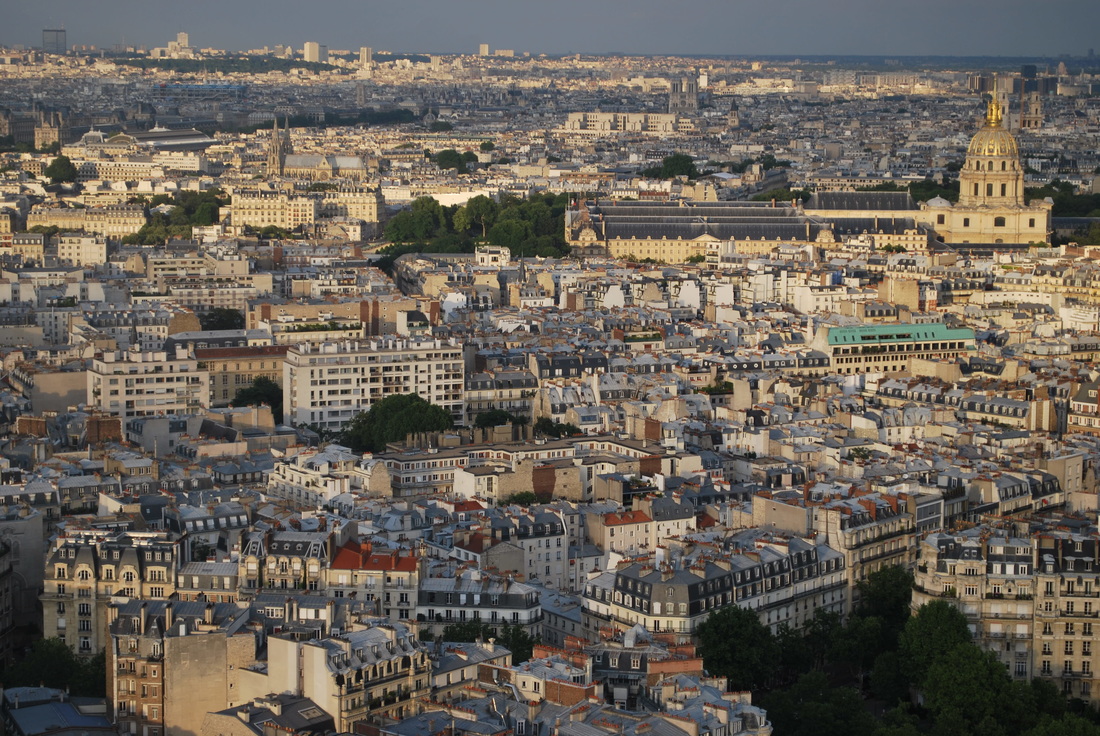
PARIS, OUR HOME TOWN (left) - a hub of international relations and news. Above: a view from the Eiffel Tower over Paris' 7th district - an area crowded with embassies and international organizations (the most important one is UNESCO) and home to The American University of Paris and N&C. About the 7th district read "The Cosmopolitan District" by Marko Milic in the archives of N&C.
To subscribe, join our staff or contribute stories, reports or photos simply join our Facebook group. You will receive a newsletter through FB plus links to each of our newly published articles and more.
Or contact us at the address below:
Or contact us at the address below:
